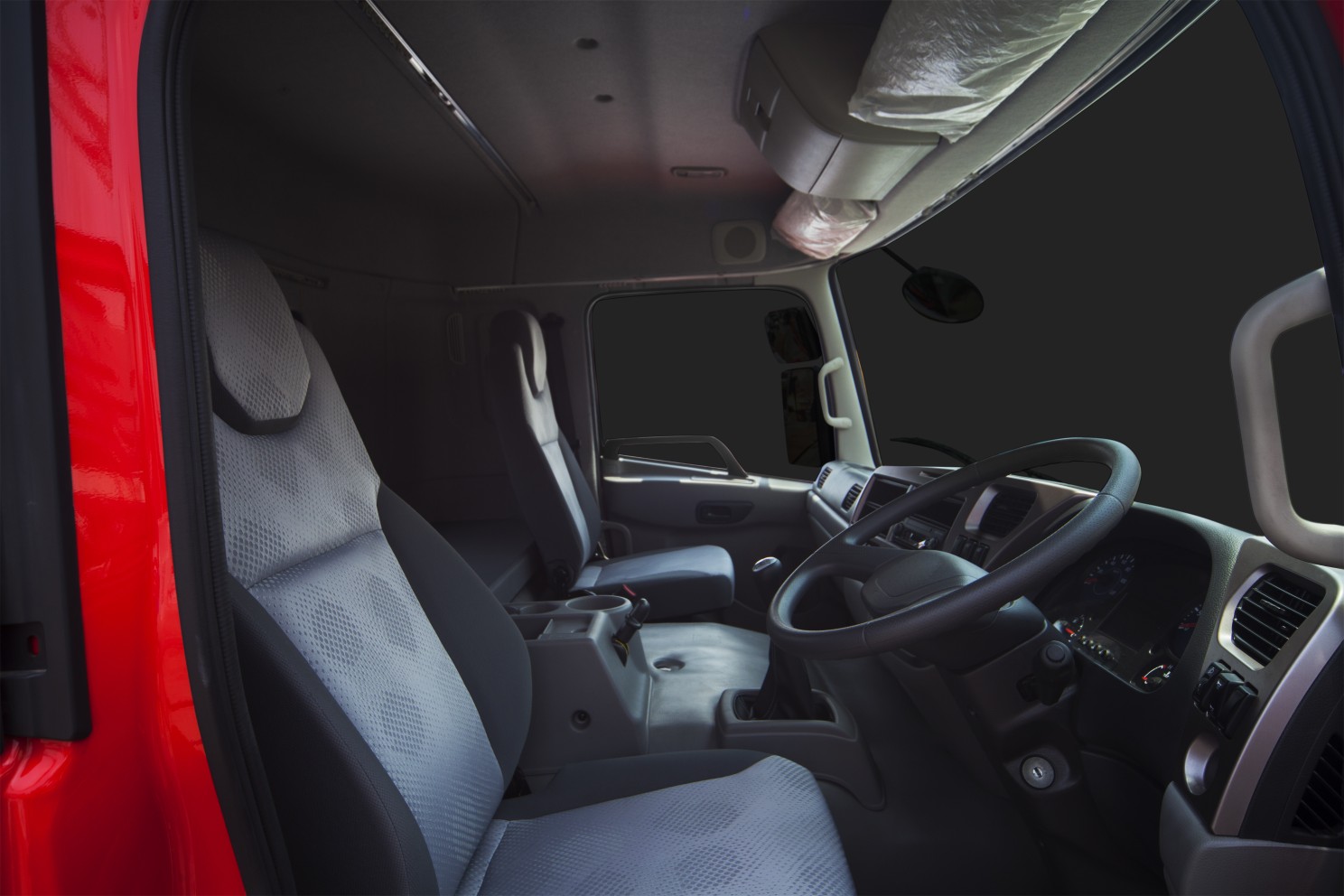
Susie Jones
Пять лучших советов, как сделать кабину грузовика домом
Создано: 22.08.2024
•
Обновлено: 22.08.2024
Как водитель грузовика, вы проводите долгие часы в дороге, которая часто может быть утомительной и однообразной, поэтому естественно, что вы хотите, чтобы ваше окружение, место, где вы находитесь дольше всего, чувствовало себя как второй дом. Поэтому многие водители стараются оформить и украсить свои кабины, но какие способы лучше всего подходят для того, чтобы ваша спальная кабина чувствовала себя как дом вдали от дома? Мы собрали пять лучших советов, которые помогут вам на этом пути.
Украшения
Один из лучших способов придать индивидуальность своей кабине - добавить в нее украшения, напоминающие о доме. Декорации также позволяют добавить стиля и цвета.
Постельное белье и подушки - Добавьте индивидуальности в постельное белье и подушки, выбрав те, которые имеют цвет или рисунок, который вам нравится. Это поможет вам почувствовать себя в кабине более уютно и менее застойно.
Чехлы на сиденья - чехлы на сиденья часто бывают разных цветов, узоров и материалов, которые оживят вашу кабину. Они не только сделают кабину более привлекательной, но и защитят интерьер от износа, грязи и пролитых жидкостей. На сайте Amazon, как правило, представлен большой выбор цветов.
Ковры, занавески и шторы - выбор ковров и занавесок может преобразить интерьер вашей кабины. Шторы не только придадут эстетическую привлекательность, но и помогут вам выспаться.
Фотографии, постеры и произведения искусства - эти предметы не занимают много места в кабине и могут мгновенно придать ей ощущение дома. Используйте командные крючки для установки без повреждений.
Развлечения: В конце дня, проведенного за рулем, расслабьтесь, как дома, посмотрев телевизор, DVD или потоковое вещание на ноутбуке. Перед просмотром вам понадобится WiFi, поэтому обязательно посмотрите на нашей странице maps page, чтобы узнать, какие остановки предлагают эту услугу.
Также можно создать точку доступа для смартфона, которая будет использовать данные вашего телефона для потокового вещания. Книги и журналы - еще один отличный способ развлечься после долгого дня за рулем. Иногда простой видеозвонок друзьям или родственникам поможет расслабиться и почувствовать себя как дома.

Комфорт
Вы проводите много времени в кабине, поэтому важно не жертвовать комфортом. Почему бы не вложить деньги в следующее:
Матрас с топпером - Нормальный сон имеет решающее значение для вашей безопасности и безопасности окружающих. Инвестировав в хороший наматрасник, вы обеспечите себе комфортное место для сна.
Эргономичное водительское сиденье - большую часть времени вы будете проводить на водительском месте, поэтому важно, чтобы оно было максимально удобным и поддерживающим. Купите эргономичное водительское кресло или подушку, которые будут поддерживать вашу спину во время долгих часов работы.
Дополнительные подушки и одеяла - Как уже говорилось выше, покупка постельных принадлежностей и подушек понравившегося цвета или рисунка поможет вам почувствовать себя в кабине как дома. Подумайте о приобретении дополнительных подушек и одеял, чтобы придать кабине еще больше индивидуальности и обеспечить максимальный комфорт.
Кухонное пространство/приборы
Установив в кабине мини-холодильник или микроволновую печь, вы сможете готовить еду, как дома, и вам не придется пользоваться услугами заправочных станций и питаться вне дома. Мы советуем подумать о том, какие предметы вам понадобятся, например, если вы любите кофе, попробуйте найти небольшую кофеварку. Использование кухонного пространства и бытовой техники не только позволит вам не тратить целое состояние на питание вне дома, но и повлияет на ваше общее состояние здоровья в лучшую сторону.
Поддерживайте чистоту и порядок
Жизнь в небольшом помещении может быстро превратиться в беспорядок. Если вы потратите время и усилия на регулярную уборку, это чудесным образом скажется на вашем психическом здоровье и позволит вам работать более эффективно и результативно. Убедитесь, что у вас есть специальные места для ваших вещей, и ProDrivers дает несколько отличных советов по организации всего.
Как водители грузовиков справляются со скукой?
Скука не только влияет на удовлетворенность работой, но и может повлиять на безопасность труда. Существует множество способов, с помощью которых водители грузовиков могут развлечься в дороге.
Музыка и подкасты: Музыка - отличный способ развлечь водителя во время длительных поездок. Создайте плейлист с любимыми песнями, которые можно слушать, - это мгновенно избавит вас от скуки. Подкасты - отличный способ сменить обстановку, многие из них могут дать совет, помочь освоить новый навык или просто развлечь.
Размять ноги: Остановка и выход из кабины, чтобы размять ноги, мгновенно избавляют от скуки. Регулярные остановки также повысят вашу энергию.
Где спят дальнобойщики?
С 1 ноября водители грузовых автомобилей в Великобритании, которые регулярно делают еженедельные перерывы в работе в кабине, теперь должны отдыхать в соответствующих зонах отдыха. Из-за того, что их мало, некоторые водители отдыхают на стоянках, что зачастую небезопасно. Поэтому найти безопасное, спокойное и тихое место, где можно припарковаться, чтобы хорошенько выспаться или отдохнуть, просто необходимо. Используя наше приложение intruck или перейдя на страницу maps page, вы сможете найти ближайшую к вам стоянку для грузовиков и ознакомиться с предлагаемыми услугами.
Как водители грузовиков справляются с одиночеством?
Несмотря на то что у профессии водителя грузовика есть много плюсов, одним из минусов этой отрасли может быть одиночество. Это может быть проблемой для многих водителей, которые чувствуют себя изолированными из-за характера своей работы. Планы по поддержанию связи с друзьями и семьей могут придать водителям сил в дороге. Форумы по грузоперевозкам, группы на Facebook и чаты - отличная возможность стать частью сообщества водителей грузовиков. На сайте All Trucking есть несколько фантастических советов, которые помогут вам бороться с одиночеством в дороге.
Чтобы почувствовать себя в кабине грузовика как дома, нужно приложить немного усилий и проявить творческий подход, но преимущества такого подхода сделают ваши долгие поездки намного легче. Важно помнить, что небольшие штрихи могут значительно изменить ваше жилое пространство, а использование приведенных выше советов позволит вам сделать его комфортным и гостеприимным. А как вы создаете в своем такси ощущение дома вдали от дома?



